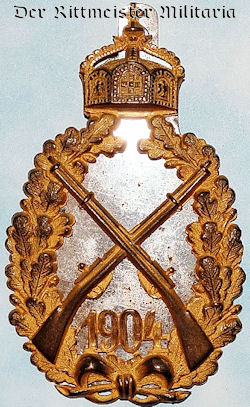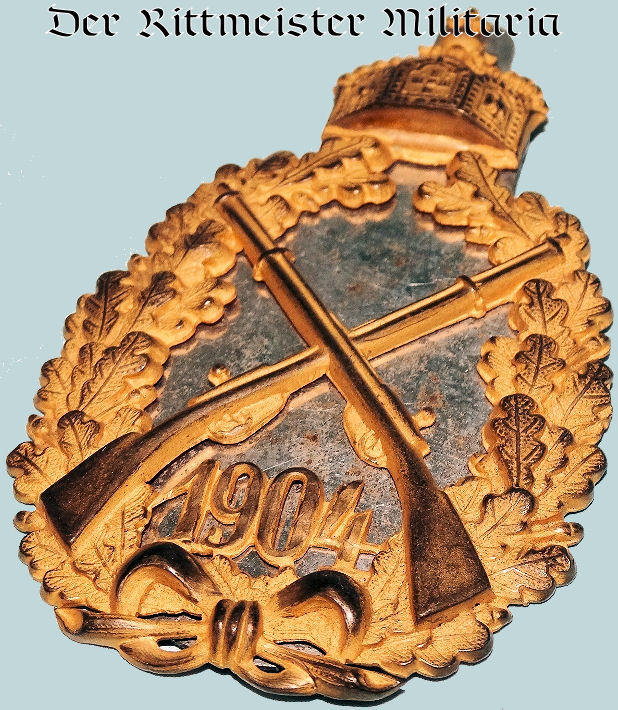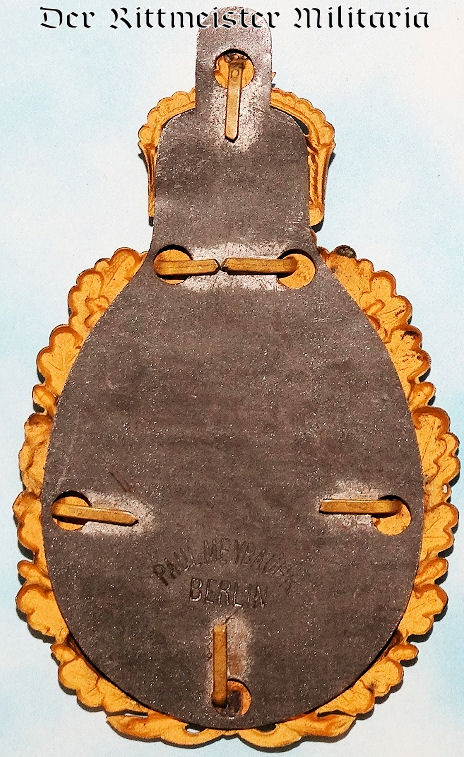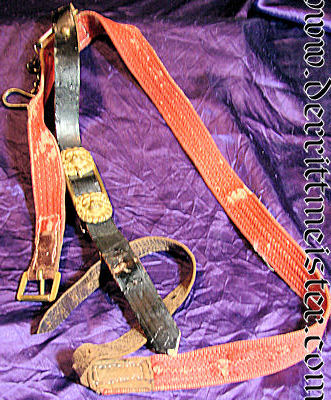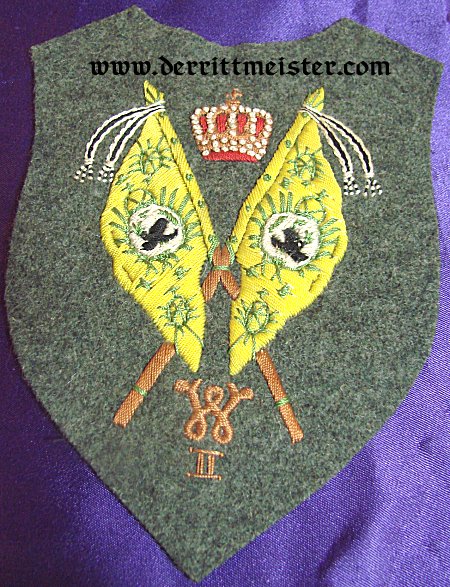Description
Every year Kaiser Wilhelm sponsored a shooting contest for the best shooting unit (Regiment, Bataillon, etc.) for the Infanterie, Artillerie, Jäger, and Kaiserliche Marine. This award was for the Infanterie in 1904. The award itself was a metal and fabric badge that was worn on one’s tunic sleeve. It was an immense honor that enlisted men and NCO’s proudly displayed on their tunics. The badge is made of brass. It measures 2 ¼” x 3 ¼.” It consists of a oak leaf wreath topped by the Kaiser Crown. A pair of rifles lies across both wreath halves, and 1904 appears at the award’s bottom. Generally, the badge was mounted on a dark-blue patch that extended beyond the metal so it could be sewn onto the tunic. This badge, however, shows NO evidence of ever having any part of the blue wool fabric. It appears that it never was installed. A mirrored fore panel is evident.
The reverse displays a hallmark for the Berlin firm Paul Meybauer, who produced the badge. Most examples of the Kaiser Wilhelm II shooting badge were produced by C.E. Juncker (also of Berlin). Previously, I had never seen one produced by Meybauer. A zinc backing also is attached on the reverse. It is possible that this particular badge was either a prototype or a salesman’s example. It is also possible that the badge was unfinished for some unknown reason.
